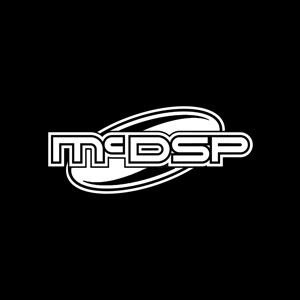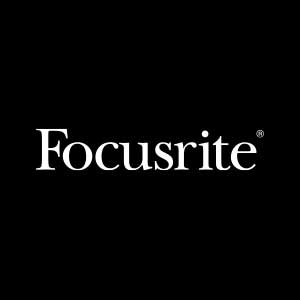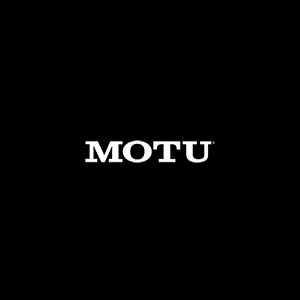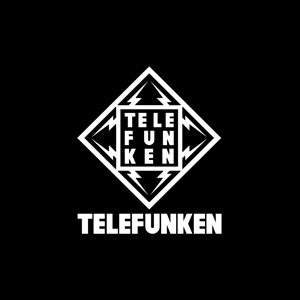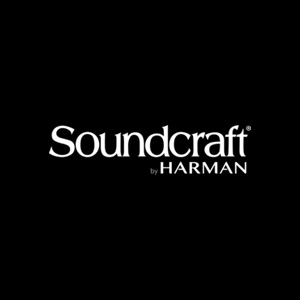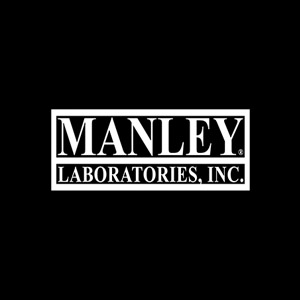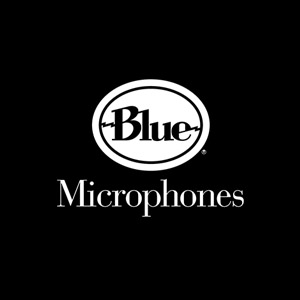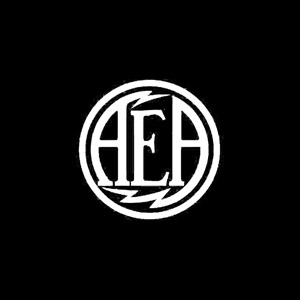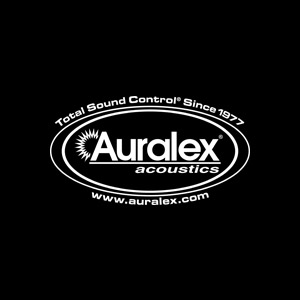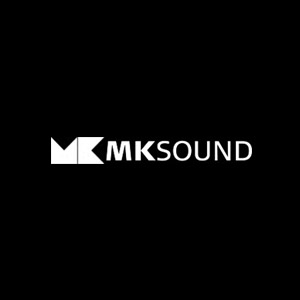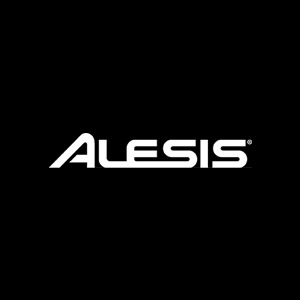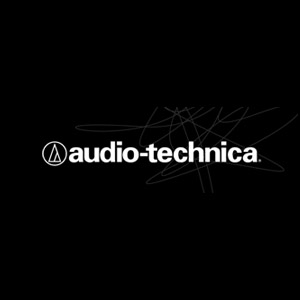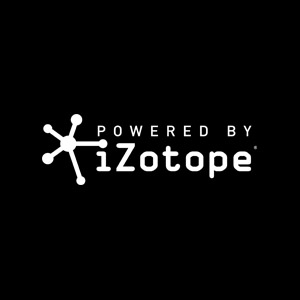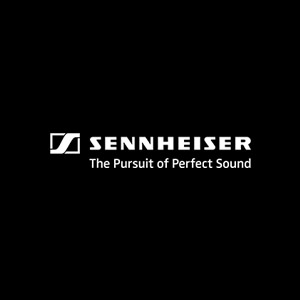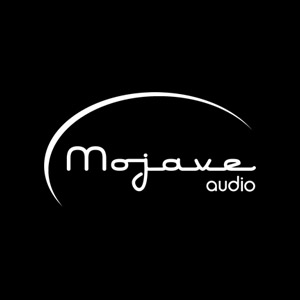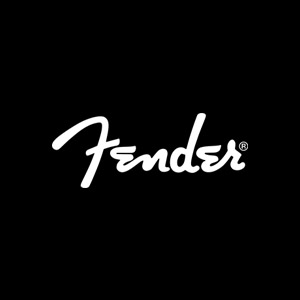Working out of New York City, Mario J. McNulty is a talented producer, mixer, and engineer with an enviable list of credits. He’s been in the studio with David Bowie, Laurie Anderson, Angelique Kidjo, Lou Reed, Earl Slick, Anti-Flag, The Raveonettes, Manic Street Preachers, and Alejandro Escovedo, along with mixing projects for Harry Nilsson, Badfinger, Prince, and Nine Inch Nails. I dropped by his downtown NYC condo/private mix suite to chat, where we hit it off and talked for hours about the craft of making records, and, in some cases, “re-making” them.
How did you end up working in studios in New York?
I started my career at Looking Glass Studios in New York City through an internship at the Conservatory of Recording Arts [and Sciences]. They said, “Make a list of five studios that you would like to intern at.” I got lucky because that was my first choice of studios. That was Philip Glass’s studio. Looking Glass happened to be the number one studio on the list, and I chose that really because David [Bowie] had worked there. The fact that I was able to get that and then eventually meet David and have this history is beyond lucky. After a couple of months as an intern, I was hired as an assistant at Looking Glass. They had a great crew there. I was mainly working on Philip Glass related projects, assisting their main engineer, Hector Castillo. I learned a lot from him. He was working for composer/producer Michael Riesman; an extremely talented guy. He was Philip’s maestro, in a way. I was involved in Philip’s projects, but also the commercial work that would come through the studio with outside engineers and producers.
That’s some good experience, right?
It was great. Being an assistant is a hard job and it hasn’t gotten easier, in any way. The hours are rough, and you have to have all these great combinations of etiquette, knowledge, and work ethic.
How to do a sandwich run!
Yeah, getting a coffee order right, too. I got lucky again, because I went freelance after not quite a year of assisting.
That quickly?
Yeah. Part of it was necessity; the studio had been pretty busy, but they were hitting a point where they were slowing way down. The studio manager at the time said to me, “I don’t know that we need you for 40 hours a week. We’ll call you when we need an assistant.” I’d just come off a run of working over 100 hours a week. All of a sudden they weren’t having any Philip sessions, or booking outside sessions. I said, “Well, I have to become a freelance engineer now.” I told the studio manager right away, and she said, “Can we still call you?” I said, “Absolutely, but I have to be proactive.” At that point, David Bowie and Tony Visconti [Tape Op #29] were wrapping up Bowie’s Heathen record in Studio A. I had done a little bit of assisting on some of the mix sessions, and I had gotten to know David and Tony a little bit. They knew I was a drummer, and I even played some for Tony on an album he was working on with Kristeen Young.
I like her music.
David was playing the Tibet House US Benefit Concert; an annual fundraiser for Tibet that they do at Carnegie Hall. They were playing a show in February, but their drummer, Sterling Campbell, was in China and he couldn’t get back in time. They needed somebody to play the rehearsal, so Tony asked me about filling in – for the rehearsal, not the show. Tony and David were there, and Adam Yauch [RIP] from the Beastie Boys was in the band too. He was playing guitar. There was the Scorchio Quartet strings, and Philip Glass playing piano. It was quite an intimidating rehearsal. David was funny. He was in the room looking at me and going, “Don’t fuck up, Mario!” But that was totally his sense of humor. He had the best sense of humor. That’s how I got to know him even more. The day I went freelance I walked right over to Tony’s Studio B – he had become a recent resident in that room – and I told him, “I went freelance. If you need an engineer, let me know.” He said, “I’m doing a session tomorrow night. You want to do it?” It was with Daphne Rubin-Vega, who was in Rent. She was doing a couple tracks. Anyway, we went to Studio A and I recorded all of that, and that was it; I was working with him at that point. We did a record [L’Avventura] with Dean & Britta from Luna. That was the first big album project that we did together. David was popping his head in the studio, because he wanted to get to work on Reality, his next album.
I bet!
We did the whole Reality album in that room. That was a longer-term project. I think that I was there working for six months or so. That started everything. The relationship with David was wonderful. It was a dream come true. As a lot of people who worked with David say, it was magic when you’re with him.
It’s probably a positive environment in the studio when you work his way.
Oh, yeah. It was really great to see, because eventually I’d become involved with all kinds of projects, either engineering for Tony, or projects where I started producing, around ‘04 or ’05, and getting my feet wet outside of that. Doing everything.
I know the feeling.
It’s the best way to learn. You do all these projects; years go on, and you have experience with different producers and artists. Whether you’re producing, or recording, or mixing, the personalities vary drastically. The vibe and the energy with David Bowie, at least when I was with him, was positive. It was very natural. He was very funny. It didn’t ever get heavy in the weird ways that it can in some sessions, where there are certain personalities and there’s tension. It wasn’t like that at all.
How did you end up “re-producing” David Bowie’s Never Let Me Down as Never Let Me Down 2018? Was it based on what you’d been talking to David about, and he handed the idea and the work to you?
Essentially. It wasn’t so direct in that way, because, of course, he passed away beforehand and it had been a while since we’d talked about it. I didn’t really think it was ever going to happen. It was an album I knew that he was very dissatisfied with. He called me one morning and said, “What are you doing today? I’ve got this idea.” I went over to his place and brought my computer. I was taking some notes. He said, “I want to take a track off of Never Let Me Down, ‘Time Will Crawl.’ We’re going to redo it. I’ll get the tracks sent over from London. I want to have a string quartet.” I thought, “Great! That sounds really interesting.” He went into a little more detail about his feelings about the album. We had talked about it before, but not in detail. He was irritated about it. He asked what I thought about it. I shared the same opinion. The gist of it was that he loved the songs on the album, but he didn’t like the production. He didn’t like the sound of it. It was really a sign of the times. It came out in ‘87.
Who was the original producer?
David Richards. It’s really not a knock or a fault of him at all. It really isn’t. I think even David would say that.
He was helping deliver what was being asked and creating what they were all trying to do in the moment.
Totally. “In the moment” is a very important thing to say there. All the musicians were fabulous. It’s all people that Bowie was working with. David didn’t work with musicians that weren’t incredible. He would choose the most unique players, whatever album it might be.
I worked on Elliott Smith’s New Moon after he passed. I’d be in the studio, wishing that I could turn around and go, “Do you think this sounds right?”
Totally. I’d imagine David sitting on the couch. Something like, “Yeah, yeah. I dig that. Keep that.”
He would have an opinion!
David was the boss in every decision. It didn’t mean that the rest of us didn’t get to make decisions. If somebody did something that he liked, he might get excited about it or say something, but he was going to let things flow, for the most part. But if there was something he didn’t like, he’d say, “No.” He was totally in charge. He was a very savvy producer; he’d sit down and call the shots.
So where did David’s thoughts on “Time Will Crawl” initially lead?
We booked Electric Lady and made a plan for the arrangement, which kept getting tweaked as we worked on the song. We recorded strings. Then Sterling [Campbell] came and played drums in Studio A. We mixed it there, as well as in Studio B. We were tweaking the arrangement. You could tell that he had thought about this. He’d say, “All right, cut this up. Move this.” I was cutting up some horns and I’d move them and make a new loop. It was great. He was producing this new version of the track. He was really happy with it and loved it. He said he eventually wanted to redo the whole album like this, to take every song and do what we’d done with “Time Will Crawl (MM Remix).” That was 2008. That went under the radar, because that ended up on a compilation [iSelect].
You got to see firsthand how he’d re-envisioned those productions.
It was essential to doing this album. Even talking to him after the fact, when we were done, and knowing about his influences for “Time Will Crawl” and what he wanted to do for it; this greatly influenced reworking that album. But I had to take into account my entire history with him, from the beginning to the very last album I did with him, The Next Day. Knowing him personally, listening to music with him, and talking about music with him. It sounds a little strange, but you may understand. It wasn’t just talking about what the album was of the moment. It could have been that we were talking about books, films, art, and comedy. Everything that was involved in my friendship with him. I had to take all that in and think. Going back into the studio to do a David album without David felt really heavy.
How did the Never Let Me Down 2018 project get instigated?
Joe D’Ambrosio, my manager, got a call from Nigel Reeve, who’s the VP/Catalogue A&R in the UK for Parlophone Records. He knows so much about the catalog and the history, but he also knew David’s wishes. He knew that this was a possibility at some point, and there was a note from David saying that this was something he wanted me to redo in order to finish what we’d started. Nigel had this information and told Joe that it might be the time to get this project underway.
It makes sense to put it into the Loving the Alien (1983-1988) box set. Here’s the ‘80s era, and a new way of hearing and viewing Never Let Me Down within that context.
You’re right. I’m guessing Nigel would say that because of this era, because they’re going in chronological order as they release the box sets, this happened to be the right time to do it. Of course, I was in. Then I had to explain, “If we’re going to do it, then let’s honor it in the same way that he would have wanted it.” I worked with Nigel and the estate here in New York, getting all of the correct blessings and approvals. I tried to be very transparent. I was certainly doing that here saying, “This is what’s required. Basically, we’re making a new record.” Letting them know that it’s not going to be a simple remix.
You’ve gotta communicate.
Totally. It was a wonderful experience. They were great, and they said, “Do what you need to do.” Then I started to have to think about the “art” part, and think about the band. Almost everything was redone. There were a couple little bits here and there that I kept. Obviously, all of David’s vocals. Thinking about David’s comments about musicians, what he liked and trying to remember what he would point out. I was doing preproduction here in this studio in January and February of 2018. I was getting ideas together, getting old multitracks. They had master multitracks recorded on two 24-track, 2-inch [tape decks], sync’d up for 48 tracks. I’d get tracks sent over from Nigel in London that were already made into Pro Tools sessions. Clean; great transfers at 96 kHz off of the multitracks. I had a really clean recording to start from. Most importantly, that included David’s voice. I’d get rid of the old production, and as long as I had David’s clean, recorded vocal, we were in good shape. I was going through tapes that Nigel would send over and trying to get the correct tapes that were used on the album. That was a whole process in itself. A lot of times he’d say, “Hey, we found the right take,” and it was. But there were a couple tracks where I’d say, “This is not actually the correct one yet!”
That’s a lot of digging around!
He has so much material over there. Once we got everything settled, I was able to do rough mixes for everybody. I’d do two or three versions for each musician, depending on what I felt they’d need and what was appropriate. For Sterling, for example, one without a click; just vocal, acoustic guitar, and drum machine. That entire album uses a drum machine, so it’s a track of kick and a track of snare.
Really? All the way through to the final mix?
Yeah, the whole album was a drum machine. There’re a couple spots where they put on some real cymbals. That’s why David wanted to put acoustic drums on “Time Will Crawl” so bad. It’s not that he was against anything programmed. I’d send those mixes to Sterling, and certain mixes to Reeves [Gabrels, guitar], and David Torn [guitar, Tape Op #49], and Tim Lefebvre [bass]. That was the core band. We’re so lucky to work with David, but, of course, he’s not sitting on the couch. I was trying to imagine that every single day, and reminding the band, too. “Look, I want you guys to imagine that David’s here. Don’t play like you would at some other gig. I want you to play as if David was here.” The arrangement for a lot of it was evolving as I’d go, especially using the strengths of those players to try to make it an organic process. That’s how David worked, and how he would have done it. I was essentially trying to do what he would have done.
As opposed to dictating too tightly and not getting them to open up with ideas?
Oh, 100 percent. There’s one song in particular that’s a really good example of that; “Bang Bang,” the last song on the album. That’s an old Iggy Pop track that David covered. The version on the album has got this certain tempo and beat, and Sterling was playing a very similar version on the acoustic drum set. It sounded pretty good, and he and Tim were doing some takes. We were listening, and nothing was really bad, but Sterling said, “I’ve got this idea. Let me do a take in half-time.” He said, “Think of ‘Moonage Daydream’” – a Bowie track off Ziggy Stardust… Once he was into the verse or the chorus, I thought it was genius. “It’s gotta be this way.” It totally changed the feel of that track. It even helped the way that I was working on string arrangements with Nico Muhly. I had hired Nico Muhly to do string arrangements on three tracks. Nico would do a version, send it to me, and we’d have a FaceTime or a Skype call and go bar by bar through all of the arrangements. His arrangements can be pretty dense. Luckily, Nico is faster than anybody I’ve ever seen. He’s amazing to work with. I had already sent over a rough mix to Nico. I emailed him right away, saying, “I’ve got another rhythm track coming. Pause. Don’t do anything.” It’s a good example of highlighting how you don’t want to have an ego in a project. You want to try – for any project – to serve the song and the album the best; but in this particular case it was as if I were making this thing specifically for David, so I was trying to honor what he hopefully would have wanted. That’s an impossible task, but you go through the process and see where you land.
Were there stumbling blocks at times, when it really felt hard to move forward?
It was a pretty tight deadline. I didn’t have the luxury of time! That probably ended up being a good thing. I was recording on specific dates. I had Sterling and Tim in the room at the same time. I had Reeves and David Torn at the same time, only for two days. Then I had extended time with Reeves, but that’s because he came over to my studio. Then I had time to do strings for a day. I had to really be careful about all the planning. There was a budget, and I couldn’t mess with that. I had to keep moving forward. I had to deliver the album by a certain time, so I was doing final arrangements and mixing and mixing. I’d have my own moments of agony here, thinking about whether I’m pushing 80 Hz too much on the filter bank. I’d listen to it over, and over, and over again. You’ve been there.
I know!
But it got there. It all got done. Keep in mind that none of this would have happened if it wasn’t David’s idea in the first place. The estate, and his family; most people around David are very careful about honoring what he wanted.
When I first heard about this project, being a Bowie fan, I was thinking, “Yup, that’s the one to rework.”
If you look at the career trajectory of David, he clearly wanted something different. The thing he did immediately after Never Let Me Down was getting into a hard rock band with Tin Machine. They did two albums, and that was it; then he went back to solo. It was cool to talk to him about music. I was very fortunate to have these times where we would be hanging out after a session, or coming to his place to work on something. I remember one night after we did something in the studio, we were listening to tracks, and he wanted to play me some music. I was also playing some for him, and we’d go back and forth. I was playing something for him, and he said, “Oh, let me show you something.” He played me some Tin Machine. It was interesting to hear it in that perspective, based on what I was referencing for him, because I could tell that Tin Machine was actually a lot more important than people realize. It was right in line with that era when Sonic Youth was taking off. It was very cool to hear it in that perspective, with him showing it to me and thinking, “Okay, I get this now, but in a different light.”
The whole breadth of David Bowie’s career: the stylistic moves and changes, picking and plucking from places, and utilizing musicians and concepts; it’s very inspirational.
It certainly was for me. It was such a huge impact on me. When I was young, his catalog opened up the door to what became my favorite music: Bowie, Brian Eno [Tape Op #85], and Peter Gabriel [#63].
Someone like Tony Visconti’s obviously an incredible engineer. When you’re engineering for a producer /engineer, how do you divvy up the work?
I think that as time went on, I guess he trusted what I was doing. Certainly if there was an issue with anything, Tony or David would just say something. It was pretty natural and organic. There wasn’t really any, “I’m doing this,” or, “I’m doing that.” Hopefully, for those kinds of scenarios, you’re working so that you’re satisfying both the producer and the artist. I know it sounds simple, but it’s not really much more complicated than that.
Well, your experience led into that.
Yeah, sure. You try to improve on that as you learn more and years go on, and you try to get better and better at it. It’s funny, because now I’m really only tracking in that fashion if I’m producing an artist. It seems like these days I’m mixing 60 to 70 percent of the time. There are so many clients now who say, “I’m dropping off a hard drive. Mix my album.”
You’re doing a lot of mixing here in your apartment-based studio space?
For all of the projects – especially budgetary, that are not booking day rates at mix studios – yes, I’m doing it all here. There are still some projects that I’ll mix out of Germano Studios and Electric Lady’s Studio B. To me, every client and scenario are unique. That’s the bottom line. Every budget is unique. I have to do an evaluation of what they want, including what their timeframe is and what my timeframe is. My manager, Joe D’Ambrosio, can be really helpful with this. He’ll put together a budget on an Excel spreadsheet and say, “All right. Here’s the breakdown.” A lot of times, I’ll say, “We should mix at my place!” Joe will say, “A studio is going to cost you X amount every day.” It’s also budgeting for the things that I don’t know about yet. If you’re going to go in for a recall, that means that we have to go back to that studio. I grew up coming from a rock background, recording bands with microphones and dealing with air. I had to admit to myself at some point, “I’m going to have to start doing pop music.”
As far as getting enough work?
Yeah, exactly. That’s where the mixing work is. They want to compete on Spotify’s Top-50. That’s a real change in sound. There’s a way to get those sounds, and it’s not camped out at a Neve-based studio for a couple weeks with a band working on an arrangement. It’s a totally different way of working.
Was the Harry Nilsson album [Losst and Founnd] that you worked on similar to the Bowie project?
In some ways, yeah; but there are some important distinctions about it. The main thing is that all the weight was on my shoulders on Never Let Me Down 2018, in terms of finishing it up. I was the producer, mixer, and engineer. All these artistic arrangement choices were a lot of work. With the Harry Nilsson album, which I was also very lucky to be involved with, my duty was as the mixer. It’s a different weight on my shoulders. A lot of the weight was on the producer’s shoulders; Mark Hudson. He had produced a lot of the original versions of the demos from ’91 to ‘93. Harry and Mark were working on versions of songs, but it was a bit here-and-there, so they never really got to record this album. Mark had recorded these various songs, but most of it was 2-track.
Oh, wow!
Yeah. Some of it was a 2-track demo, some even on cassette. Sometimes they had Jim Keltner come in. He ended up being the drummer on all of the tracks, but in the early ‘90s – when they were doing those demos – he was only on a couple of them. Each song was of various formats and various qualities. That made it extremely challenging, because there had to be a determination made (and this was really mostly Mark’s) as to whether or not to try and extract the vocal from the existing demo or production and build a production around that. Or do we work with what’s there and around that, knowing that we have a vocal with shakers all over the vocal track? There was a lot there to deal with. There was a process where Mark was doing a bunch of recording in L.A. with his engineer, Dan Moore. He knew I was going to mix the album. I’d talk to him on a regular basis, so he’d call me, “Hey, here’s where we’re at! What do you think?” There were times where they were asking, “What should we do with this track?” If we really need to extract the vocal, there’s no perfect way of doing that. I spoke to my old assistant, Luca Bruegger, out in Switzerland. He said, “A friend of mine is having a lot of success with this program called Audionamix.” I sent it to Mark to check out. It’s a very deep program, where you can do some simple extraction, but if you want to get it really honed in you’ve got to know the program. They were having a little bit of success, but they knew it could be better, so they started working directly with Audionamix. I can’t remember exactly how many they did. I think it was two to four, maybe more. Their experts would extract that vocal in the best way possible. I’d have a vocal that was mostly extracted, but there are artifacts. In that sense, every track was a different animal. Some vocal tracks had certain EQ characteristics that I had to dial out, and some the issue was time-stretching into certain places. It all made sense in the way that Mark brought in some of the same band; Jim Keltner, Van Dyke Parks, and Jimmy Webb played amazing piano. Harry’s son, Kiefo Nilsson, played bass on the album. Jimmy Webb’s song, “What Does A Woman See in a Man,” ended up being one of the biggest projects for me, in terms of mixing, because there was so much forensic work done on each line of the vocal. It was one that was extracted. There was a reverb on it, and a lot of artifacts. Also, to make matters even more complicated, it’s very naked. This song is basically a vocal, piano, and strings.
There’s a lot less to hide behind.
It’s going through with a fine-toothed comb and seeing if there are certain tails that need to be shortened or certain movements of words, plus an EQ needed on an artifact on a word. The Jimmy Webb piano obviously helped a lot; it was beautiful. So he comes in playing it, and it’s very grand sounding. Harry is singing his heart out. It’s not young Harry, it’s older Harry. But you still know that it’s him. It’s very heartfelt. So, back to what you’re saying; I didn’t have the same input, but also those creative burdens weren’t on me in the same way.
Absolutely. Mark’s handling production.
He was. This project meant a lot to him. Especially because he started it over 25 years ago.
Yeah, and Harry was his friend.
He told me he met Harry in 1969. They were pretty tight. At one point, I think there was even talk about just releasing the demos as-is, and Mark would say, “No, you can’t do that!”
“That’s not what we intended.”
Yeah, exactly. His songwriting was very unique. It’s this colorful, playful thing.
How did you get involved?
I’ve known Mark Hudson for a long time now. I was producing some albums for Earl Slick, the guitar player with Bowie and John Lennon, and we’ve been tight for a long time. This was about 2013. We ended up going to Germano Studios to do an overdub. I knew who Mark Hudson was, but I’d never met him in person. I think we were working on one of the tracks Mark co-wrote with Earl Slick. He came into the studio, and we hit it off right away. He’s a really awesome character. He’s such a funny guy. All of a sudden, he was saying, “Hey, I’ve got this project. You want to mix it?” With the Nilsson album, I’m grateful and lucky. I always feel that way.
We learn so much from working with people like them on great records.
Oh, man, absolutely. We’re very lucky in that way. There’s just a small handful of people who get to be around that level of art and creativity.




